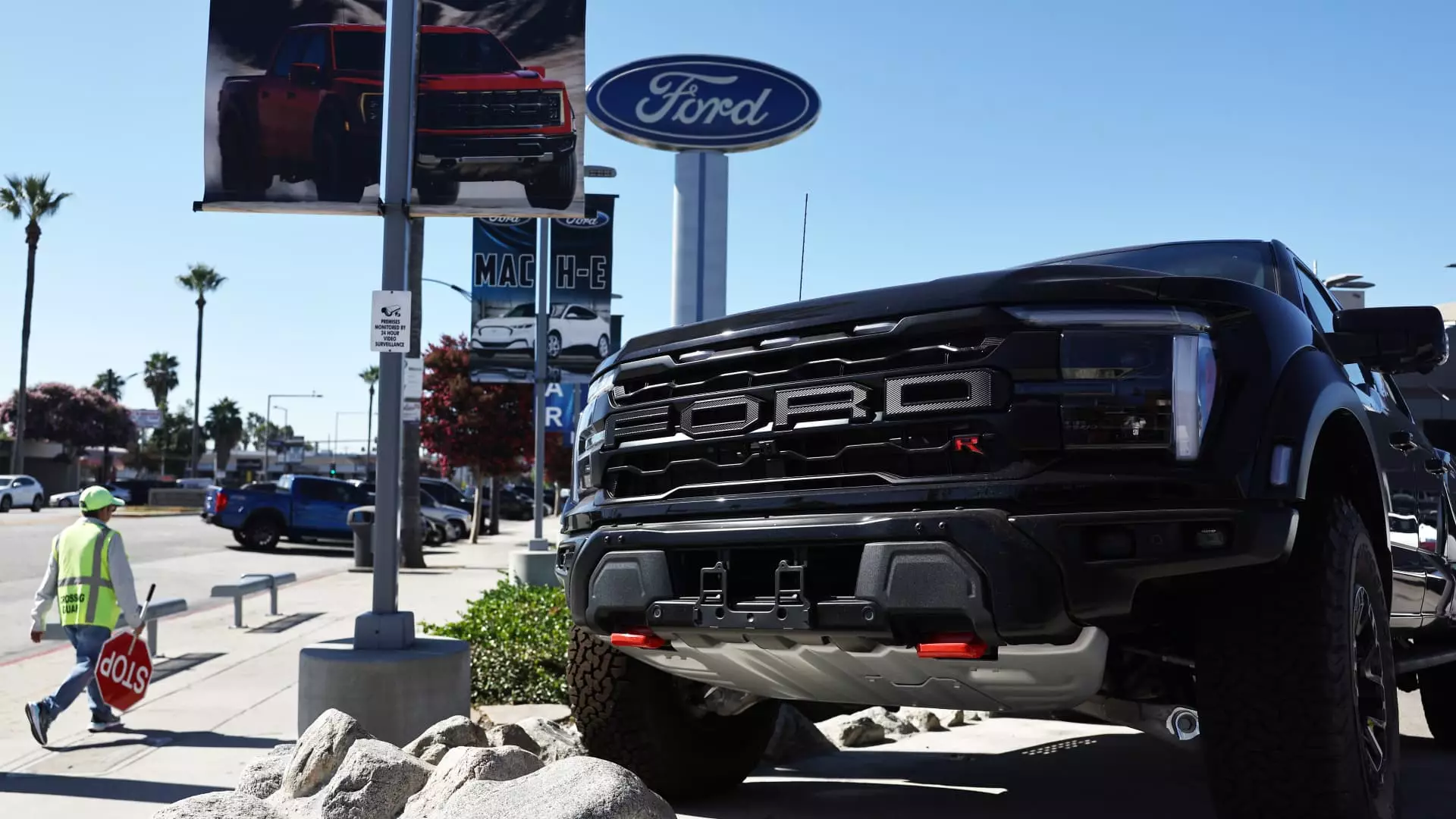As President Donald Trump’s proposed 25% tariffs on imported vehicles loomed closer, the automotive industry found itself teetering on the brink of uncertainty. While tariffs are typically intended as a means to bolster domestic production, in reality, they often become a double-edged sword. For automakers like Ford, the tariffs present an existential crisis—one that could tarnish margins and provoke a seismic shift in consumer behavior. Rather than waiting for the storm to pass, Ford has opted for proactive measures to counteract the impending fallout. Their Employee Pricing Program, dubbed “From America, For America,” illustrates how they are attempting to transform adversity into opportunity.
Ford’s quick pivot highlights a significant strength: their robust presence in U.S. production, especially amidst turbulent economic landscapes. Interestingly, such programs traditionally raise eyebrows within financial circles due to their potential to decimate dealer margins. Yet Ford’s leaders appear confident, believing that aligning consumer interest with favorable pricing strategies can foster stronger sales during uncertain times. This highlights an essential philosophy in any business—adapt or be left behind.
Striking While the Iron is Hot
As analysts have pointed out, Ford’s strategy aims to tap into what can be described as “opportunity in chaos.” It’s a calculated risk to leverage the consumer anxiety created by tariffs. Their statement captures a more personal touch, appealing to everyday Americans who might feel the economic pinch: “We understand that these are uncertain times.” By addressing buyer fears head-on, Ford is not only selling cars but also gaining trust in a marketplace characterized by doubt.
Notably, Ford dealer Marc McEver’s enthusiastic endorsement of the pricing program illustrates its potential impact. By positioning itself as a consumer-first brand, Ford is attempting to reframe the narrative while sidestepping negativity surrounding the tariff imposition. This proposition is particularly appealing when consumers may rush to make purchases before price hikes materialize.
Market Dynamics: The Land of Opportunity
What’s fascinating is the way Ford’s pricing initiative is creating a ripple effect across the industry. Rivals like Stellantis have taken note, adopting similar employee-pricing strategies as they scramble to avoid losing their foothold. Hyundai, making headlines with its decision to maintain current pricing for the next two months, echoes a collective fight against rising consumer concerns amid economic uncertainty. It’s a reminder of the fierce competition that defines the automotive marketplace.
One must also recognize the significant backdrop of supply and demand. With an ample supply of older models, automakers find themselves in an advantageous position to entice consumers eager to secure vehicles before potential price increases. This convergence of consumer anxiousness and availability offers a unique moment in time—one in which companies can shift paradigms if they play their cards right.
Anticipating Economic Headwinds
The looming threat of a U.S. recession, as indicated by J.P. Morgan’s increased percentage forecast, complicates this picture further. Consumer purchasing power is fragile, and many are seeking assurance that their investment is sound—making it all the more critical for companies to act decisively. The current climate seems to shout: “Buy now because tomorrow may not be the same.”
Ford has recognized that the imperative to sell is heightened when economic downturns appear on the horizon. This strategy of immediate consumer incentives may resonate with buyers who are all too aware of the unpredictability ahead. It’s almost an exercise in emotional intelligence, understanding that in times of fear, the offer of stability through tangible goods like vehicles can be compelling.
A Shared Mission: Building Trust through Transparency
It’s crucial to examine not only the immediate gains companies like Ford may realize through this pricing model but also the longer-term trust that can result from authentically addressing consumer needs. It presents a chance for automakers to pivot their narratives towards one of collaboration and community support.
In an industry often criticized for putting profit over people, Ford’s initiatives signal a shift towards consumer-centric strategies—designed not just to sell cars but to create a relationship where trust is cultivated. The efficacy of these decisions will inevitably lead to broader implications for how automakers engage with consumers in the tumultuous economic landscape that lies ahead.
In closing, Ford’s proactive maneuver with its “From America, For America” program serves as a compelling case study of corporate resilience. By taking calculated risks, aligning with consumer sentiments, and embracing the duality of opportunity and expectation, Ford sheds light on the fundamental dynamics of the American automotive industry during a time of potential recessionary pressures.

